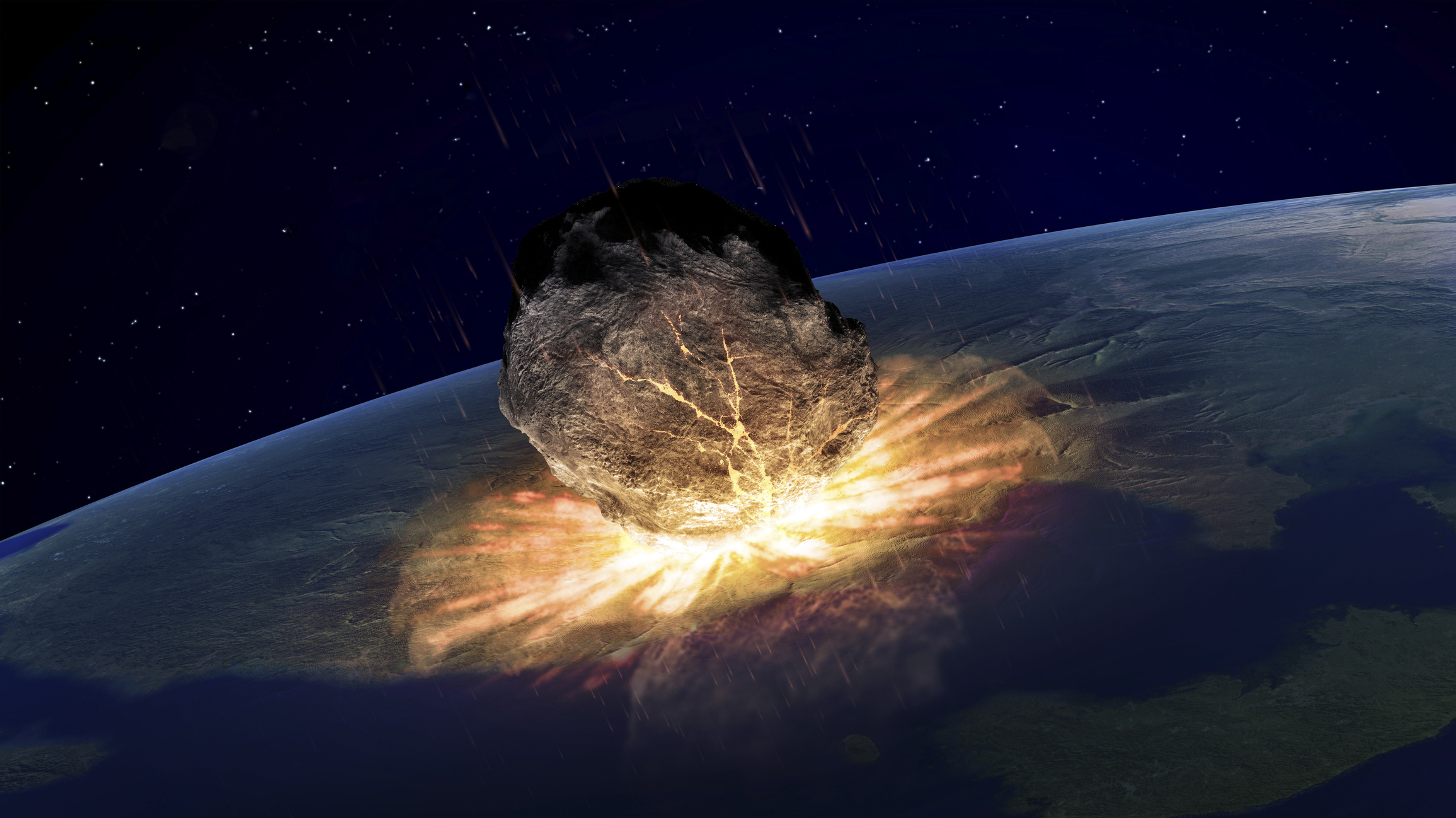
What happened when the dinosaur-killing asteroid slammed into Earth?
It went down 66 million years ago.

Hidden below the waters of the Gulf of Mexico, the Chicxulub crater marks the impact site of an asteroid that struck Earth 66 million years ago. The most consequential outcome of this cataclysmic event was the fifth mass extinction, which wiped out about 80% of all animal species, including the nonavian dinosaurs.
But what really happened when the asteroid collided with Earth?
By studying the geology both at Chicxulub and worldwide, scientists have pieced together what happened that terrible day and the years following it.
Related: How long do most species last before going extinct?
Even before the asteroid hit, it was primed for decimation, colliding with Earth at the most destructive angle, according to a 2020 study published in Nature Communications. The asteroid was about 7.5 miles (12 kilometers) in diameter and was traveling about 27,000 mph (43,000 km/h) when it created a 124-mile-wide (200 km) scar on the planet's surface, said Sean Gulick, a research professor at the University of Texas Institute for Geophysics, who led the study. More importantly, the asteroid struck the planet at about 60 degrees above the horizon. This angle was particularly destructive because it allowed the asteroid's impact to eject a large amount of dust and aerosols into the atmosphere.
Gulick pointed to his colleague's evidence in the region to support the simulations for the angled hit, including the asymmetrical structure of the crater, the position of upwarped (bent upward) mantle rocks, the unique sediment sequences in cores gathered from the region and, in particular, the absence of a distinct type of rock, called evaporites, in the cores, like halite and gypsum.
Gulick's team estimated that the impact would have vaporized the evaporite rocks, sending 325 gigatons of sulfur in the form of sulfur aerosols, as well as 435 gigatons of carbon dioxide, into the atmosphere.
Sign up for the Live Science daily newsletter now
Get the world’s most fascinating discoveries delivered straight to your inbox.
The material thrown into the atmosphere consisted largely of pulverized rock and droplets of sulfuric acid, which came from sulfate-rich marine rocks, known as anhydrite, that vaporized during the asteroid strike, according to a 2014 study published in the journal Nature Geoscience. This cloud of microscopic material created a shroud around the planet, reducing incoming solar heat and light. The resulting long-term cooling drastically altered the planet's climate. A 2016 study in the journal Geophysical Research Letters found that the average temperature in the tropics plummeted from 81 degrees Fahrenheit (27 degrees Celsius) to 41 F (5 C). As incoming sunlight dimmed, photosynthesis waned and the base of the food chain on land and in the ocean collapsed, bringing down the dinosaurs and many other animals.
Meanwhile, the airborne sulfuric acid led to lethal acid rain that rained for days following the impact, killing countless marine animals living in the upper parts of oceans, as well as in lakes and rivers, the 2014 study found.
The impact also triggered massive tsunamis, shallow water waves that propagated through Earth's oceans. The wave initially reached nearly 1 mile (1.5 km) high and traveled 89 mph (143 km/h), and other waves reached massive heights, including up to 46 feet (15 m) in the Atlantic Ocean and 13 feet (4 m) in the North Pacific Ocean, according to modeling research. What's more, depositional evidence from the massive waves is preserved in the sediment record around Louisiana. A 3D seismic survey of the geology under Louisiana revealed long, asymmetrical 52-feet-tall (16 m) mega ripples that point back to the impact site in the Gulf.
And fires raged
The pulverized rock and ash cascading back to the surface after the impact also ignited a series of wildfires that researchers likened to a broiler igniting dry tinder. The additional smoke and ash likely contributed to the cooling shroud, further reducing incoming sunlight.
It's easy for geologists to see when the asteroid hit when they examine rock layers; in rocks around the world dating to the end of the Cretaceous period 66 million years ago, there's a thin layer of clay enriched with iridium, an element rare on Earth but common among space rocks, a landmark 1980 study published in the journal Science found. But while other spectacular events, including wildfires and tsunamis, capture the imagination, Gulick believes the bigger deal was changes in Earth's atmosphere, where the ghastly shroud led to cooling that lasted for more than a decade.
"The only way to make a mass extinction event is to mess with something that affects the entire planet," he said. "Here you have direct evidence of that happening."
Originally published on Live Science.

As a scientist, Stacy Kish has focused her research on Earth science, specifically oceanography and climate change. As a science writer, she explores all aspects of science from mites living books to noctilucent clouds, stretching across the mesopause. She finds every aspect of science intriguing and considers a good day to be one where she learns something new and unexpected. In her free time, she works on perfecting new cake recipes to share with others.









